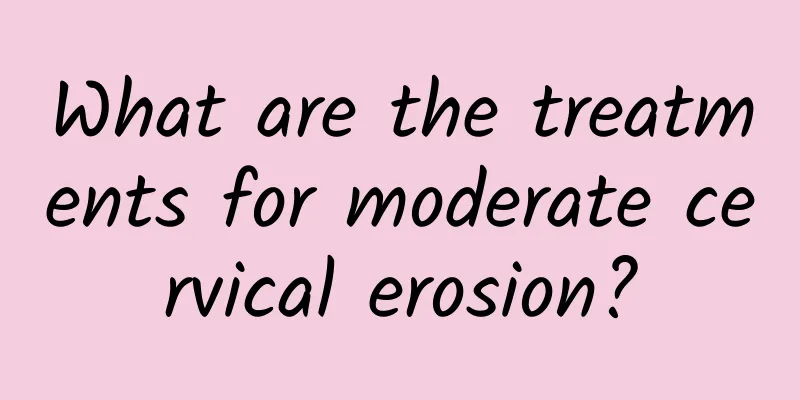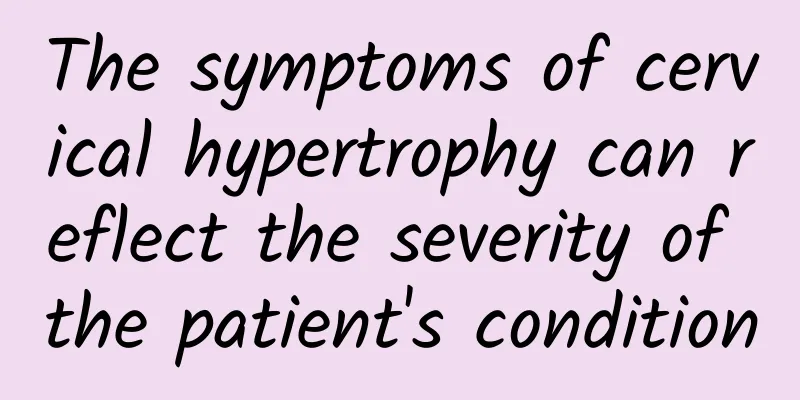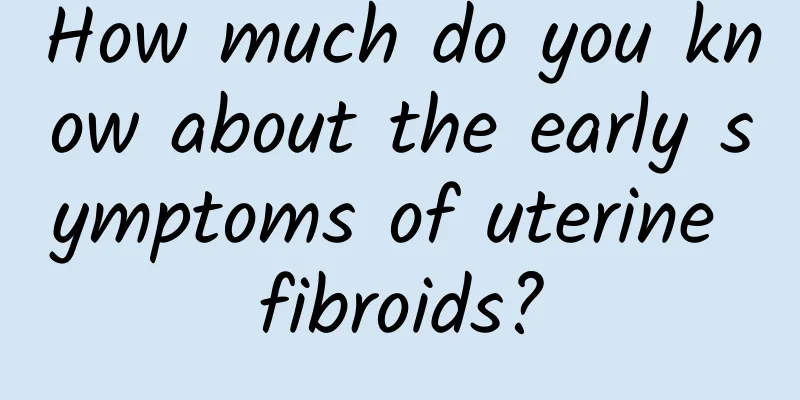What are the treatments for moderate cervical erosion?

|
Moderate cervical erosion can be treated with a variety of methods, including medication, physical therapy, and surgery. The specific choice should be determined based on the patient's condition and the doctor's advice. Treatment methods include local application of drugs, laser therapy, cryotherapy, etc. 1. Drug treatment Drug treatment is a common method for moderate cervical erosion and is suitable for patients with mild symptoms or those who are unwilling to undergo surgery. Commonly used drugs include: Antibiotics: such as metronidazole suppositories, used to control infection and reduce inflammatory responses. Antiviral drugs: such as interferon suppositories, which are suitable for cervical erosion caused by viral infection. Chinese herbal preparations: such as compound zedoaria oil suppositories, which have the effects of anti-inflammatory and repairing cervical tissue. Drug treatment must be carried out under the guidance of a doctor to avoid self-medication which may worsen the condition. 2. Physical therapy Physical therapy is one of the main treatments for moderate cervical erosion. It uses physical methods to remove diseased tissue and promote the regeneration of healthy tissue. Common methods include: Laser therapy: uses high-energy laser beams to burn diseased tissues. The operation is precise and recovery is relatively fast. Cryotherapy: Liquid nitrogen is used to freeze the diseased tissue, causing it to necrotize and fall off. It is suitable for smaller erosions. Microwave therapy: uses microwave thermal effects to promote tissue repair and is suitable for patients with moderate erosion. Pay attention to personal hygiene after physical therapy to avoid infection. 3. Surgical treatment For patients who do not respond well to medication and physical therapy, surgical treatment may be considered. Common surgical methods include: Cervical conization: removal of diseased tissue, suitable for large-scale erosion or suspected cancer. LEEP knife surgery: uses high-frequency radio waves to remove diseased tissue, with minimal trauma and quick recovery. Hysterectomy: Only suitable for patients with severe lesions or combined with other gynecological diseases. Regular follow-up examinations are required after surgical treatment to monitor recovery. Although moderate cervical erosion is common, the appropriate treatment method should be selected according to the specific situation. Drug treatment is suitable for mild patients, while physical therapy and surgical treatment are suitable for moderate to severe patients. No matter which method is chosen, it should be carried out under the guidance of a professional doctor, while paying attention to personal hygiene and regular check-ups to ensure the treatment effect and prevent recurrence. |
<<: Abnormal leucorrhea bleeding after pregnancy
>>: What to check for abnormal vaginal discharge
Recommend
My period just ended 4 days ago and came again this afternoon. What’s going on?
My period just ended 4 days ago and came again th...
Do you know the advantages of surgical abortion and medical abortion?
Do you know what the advantages of surgical abort...
What are the early symptoms of habitual miscarriage? How to deal with habitual miscarriage?
If a woman has habitual miscarriage, it will have...
Do uterine fibroids affect life expectancy?
Does uterine fibroids have any impact on life exp...
What should be paid attention to when performing negative pressure aspiration
Vacuum aspiration is a method of artificial abort...
Can hyperprolactinemia be cured by traditional Chinese medicine?
Hyperprolactinemia is one of the causes of female...
What causes pelvic effusion? How to treat it?
What causes pelvic effusion? How to treat it? Pel...
What are the drugs that can induce abortion?
What are the drugs that can be used for abortion?...
Diet therapy for congenital absence of vagina
What are the healthy dietary treatments for conge...
Five symptoms of uterine fibroids for women
The symptoms of uterine fibroids are common benig...
What is the cause of hyperprolactinemia? There are 5 influencing factors
Prolactin is also called prolactin. This hormone ...
The cause of pelvic inflammatory disease is related to direct spread
Pelvic inflammatory disease is a relatively commo...
How to deal with the recurrence of vulvar itching in women
How to effectively prevent the recurrence of vulv...
Is the chance of uterine fibroids becoming cancerous very high? Is surgery for uterine fibroids necessary?
Although uterine fibroids are tumors, they are no...
Patients with uterine fibroids should always pay attention to their typical symptoms
As the number of patients with uterine fibroids i...









